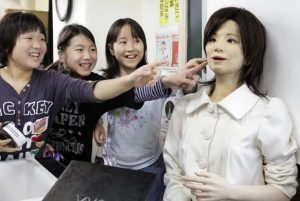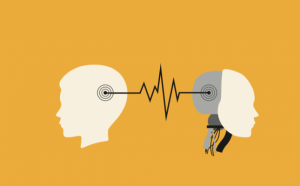
[iStock]
As we stand on the brink of the fourth industrial revolution, the boundaries between the physical, digital, and biological worlds start to blur. Technology has been integrated into our everyday lives, and we rely more on it.
This is because this new era brought about the advancement of technology, especially in automation, engineering, Artificial Intelligence (AI) and machine learning. The possibilities are now endless with technology’s newfound capabilities.
Which has brought about a potential threat: will our jobs be replaced by technology? This is especially so regarding teachers, given the up-and-coming independent learning and online learning. Not to mention the looming threat of AI robots too.
The Rise of Technology in the Education System

[Pond5]
During the pandemic, Singapore took to Home-Based Learning (HBL) or online learning to curb the spread of the pandemic while still facilitating learning.
After all, it allowed many people to connect and communicate without needing to physically meet up, and it was convenient. This is especially important during the circuit breaker when people could only leave their houses for basic necessities.
Teachers would upload lessons and homework on online portals like the Singapore Student Learning Space (SLS). They would also use platforms like MS Teams or Zoom to hold classes and carry out the school curriculum.
Technology is also used to grade tests and plan and customise lessons (I will go into that later)! Additionally, students are referred to resources online and are encouraged to pursue independent learning.
Advancement of AI

[iStock]
A part of the rise of technology comes from the advancement of AI. In the past five years, AI has developed and evolved to incorporate:
1. Better vision
2. Speech recognition and generation
3. Natural language processing (understanding and generation)
4. Image and video generation
5. Multi-agent systems
6. Planning
7. Decision-making
8. Integration of vision
9. Motor control
Machine learning – a subset of AI, allows a machine or a robot to analyse and learn from past data without programming explicitly. This will enable AI to solve complex problems like an average human.
Different AI systems also allow machines and robots to ‘possess’ critical thinking, problem-solving, and reasoning skills like a normal human. This has allowed AI to simulate human behaviour. Some examples of AI are AI chatbots, smart assistants and AI robots like Sophia.
Lately, AIs have been used to mark students’ work, personalising lesson plans for individual students and task automation. There is also a possibility of using AI in robots to create a ‘robot teacher’. A robot that fully functions like a human teacher.
Why Technology?

[iStock]
Technology is capable of customising plans to each student’s individual needs. This helps students improve because it closely tracks their learning and progression.
Then it narrows down and concentrates on areas that need more work. This means that students become more well-rounded in their learning. It is also used to help students find information easily through the internet. This is especially helpful if it is information that teachers don’t know about.
Technology also offers instant feedback to students and offers an expanse of digital tools that students can utilise. Another plus point is that it provides learning without human biases and burnouts.
Human biases and burnouts are common in our education system. An example of human bias is a teacher favouring a student and providing them with more resources or give them a higher grade for their test. This means that not every student is getting the same attention and resources which causes them to lose out.
Burnout is another factor that negatively affects teachers’ performances. Studies show that it makes teachers less sympathetic to their students’ problems, and are less committed to their job. This means that students are not taught well and it also increases students’ stress levels.
This has brought about the idea of using technology in robots. This enables the idea of ‘robot teachers’. These ‘robot teachers’ serve to eliminate these biases and reduce the workload of teachers.
Robot teachers
Robot teachers don’t need pay, leave or healthcare. They also don’t experience stress, burnout or suffer from mental illnesses. They also have the endurance to continue working continuously and don’t require much rest.
This is especially important since there is a limited supply of teachers now, and hiring full-time school teachers is becoming more expensive. Many teachers are also quitting, so the ones remaining are stretched thin from covering vacated positions.
Tried and Tested

[The Guardian]
It might seem unbelievable, but by using AI, technology comes closer to taking over teachers’ roles. Researchers and scientists have already attempted to create a robot teacher.
In the 2000s, engineers from the Tokyo University of Science designed Saya. Saya has expressive facial features and vocalisation capabilities. It could do roll calls, carry out a lesson and monitor students’ actions.
In India, another robot teacher was also developed – Eagle 2.0. This robot could teach Biology, Chemistry, Geography, History, and Physics. It could also answer students’ queries, ask students questions, and react to the answers it receives.
What Can Human Teachers Do That Technology Can’t

[Technology vs Humanity]
However, despite technology’s many pros, there are also many banes to replacing teachers with technology.
First of all, the school curriculum not only educates students on academics. It also incorporates Social and Emotional Learning (SEL), which refers to soft skills essential for a student’s personal and social well-being.
Unlike technology, teachers also work to guide, mentor and inspire students. Technology also lacks the empathy and human touch of teachers. For example, if a student experiences a lack of motivation, technology cannot encourage the student and give them advice, but a teacher can.
It is good to note that technology is merely an augmentation of a teacher. Although it facilitates learning and tracks students’ academic progress, it cannot help students develop ‘heart’ skills.
Change of Teachers’ Roles

[Unsplash]
The integration of technology into our education system is inevitable. However, this has led to the change in the role of teachers in order to balance out students’ development.
Instead of the top-down direction that was once maintained in traditional classrooms, teachers now take a more guiding and facilitating role. One that supports students and helps students develop core values and 21st-century skills.
Since teachers are now working side by side with students to guide them, they need to have a closer, more interpersonal relationship with their students. This way, it helps them understand their students’ circumstances, personal issues and difficulties they might have while in school.
Teachers also need to ensure that their classrooms facilitate building social and emotional skills. For example, adding more group work into lesson plans or encouraging students to participate in class more.
What About Teacher’s Assistants?

[Freepik]
Although it sounds like our teachers are less likely to be replaced by technology, the same can’t be said for our teacher’s assistants.
Teacher’s assistants usually help in classroom preparation. They help teachers plan lesson schedules, prepare the classroom, and prepare materials for the lesson. They’re also responsible for individual students who might need assistance with understanding material.
Often, these robots assist teachers with various tasks, like grading assignments and informing parents of their child’s progress.
However, technology is starting to take over such menial tasks. Now, teachers usually rely on technology to complete these tasks because it is more efficient, reduces the chances of miscommunication, and is more reliable.
Conclusion

[Freepik]
Thankfully, technology won’t completely replace our teachers anytime soon. Instead, it will support and help teachers with their tasks. This allows teachers to assume a role of guidance and facilitation, which will benefit our students in the long run.
Parents Need-To-Know: How Technology Has Changed Learning In Our Singapore Schools
6 Common Mistakes Singapore Tutors Make when Teaching With Technology
